Riverwalk Offers Many Different Views
Of Downtown, the river, many artworks and brewpubs of course.
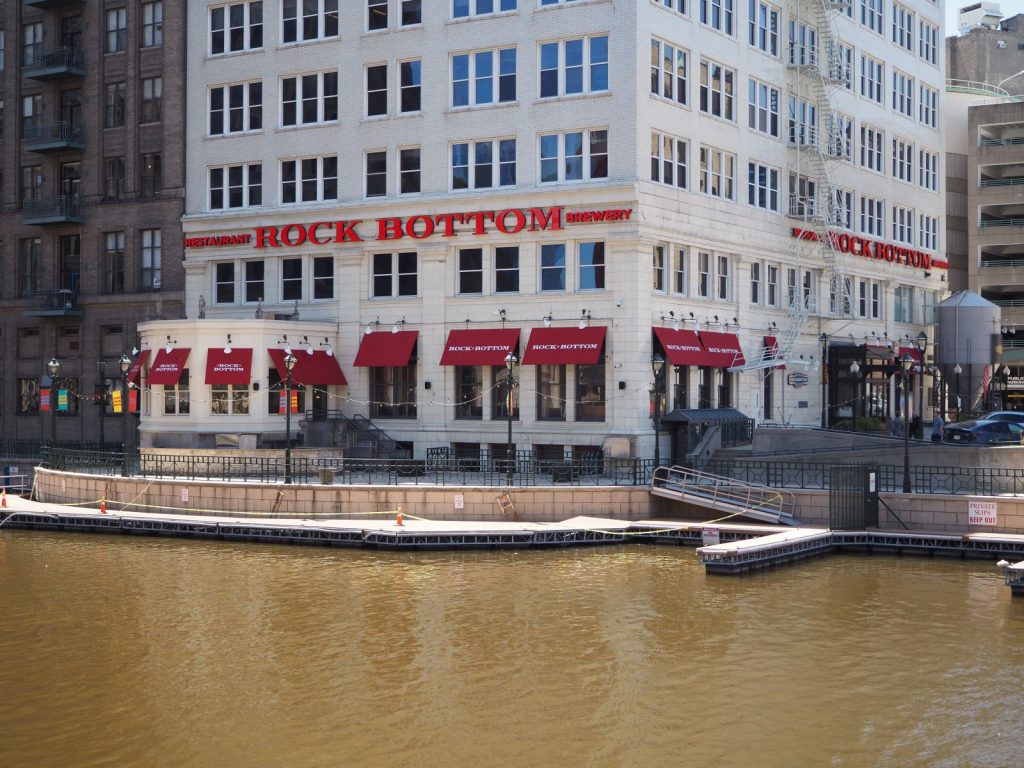
Rock Bottom Restaurant & Brewery is located on the Milwaukee Riverwalk. Photo taken May 12th, 2021 by Jeramey Jannene.
Distance: Five miles round trip (on the west side of the river)
Start: 2134 N. Riverboat Rd.
Parking: On the street
The Milwaukee Riverwalk is a journey through the heart of Milwaukee with multiple views of Downtown, magnificent public art, and the river itself, a fascinating panorama of life on and adjacent to the river.
In 1988, then Mayor John Norquist, spearheaded the Riverwalk Initiative with the intent to promote a walkway to connect business and leisure activities along the river. This was the beginning of a public/private partnership between the city and local business owners. Norquist authorized public spending while business leader Gary Grunau spearheaded the creation of Business Improvement District #15 to raise funds for the project from the private sector. The Riverwalk was designed in the early 1990s and in 1997, the first section, eight downtown blocks were completed.
Now Milwaukee has a paved pedestrian walkway, a contiguous promenade on the west side of the river from the North Avenue Bridge to south of Clybourn Street, where it ends, just short of the I-794.
It’s also possible to continue into the Historic Third Ward on the east side if you cross the river on the pedestrian bridge just south of Juneau Avenue. For the sake of clarity, this walk stays on the west side through the Beerline and then Downtown, and on to its conclusion at I-794.
The Walk
Head south on Riverboat Road, walk under the Humboldt Street Bridge, and watch for the concrete path on your left that leads to the river and the Riverwalk. The Beerline section follows the former industrial corridor, part of the railroad route that serviced Schlitz, Pabst, and Blatz breweries. Today, this part of the Riverwalk is lined with condos on both sides of the river, creating a riverside canyon in between these mid-rise buildings.
After you walk under the Holton Street Bridge, you will come to Lakefront Brewery where tables overlooking the river invite a respite and a beer. The next landmark will be a wooden ramp that takes you up to Pleasant Street. Cross Pleasant Street and straight ahead you will see the Aurora parking lot. Continue into the lot and look for the paved trail that continues alongside the river. Now the Riverwalk takes you through Schlitz Park; past the world headquarters of Manpower Inc.; and underneath McKinley Avenue, the final underpass on the walk.
Just beyond the sculpture, look for the pedestrian bridge that leads across the river to the Riverwalk on the east side and follows the river through Downtown and on to the Historic Third Ward. On the pedestrian walk, look for sculptures on the posts known as River Gems, an odd assortment of reclaimed objects repurposed as art by John Ready, a former jeweler. When sunlight strikes them, they resemble giant pieces of jewelry.
Across Highland Avenue, Paul Sebban’s cast iron Limitation Bowls stand four feet high and appear to be giant planters. Don’t be fooled. Despite their use as summertime planters, they are actually sculptural bowls, intended to be viewed as such.
In Pere Marquette Park look for the three sculptures. First there’s one of Pere Marquette himself, larger than life, holding a cross in his left hand. This French missionary allegedly camped in the vicinity in the 1670s. Behind this bronze sculpture is a granite wall where there is a representation of a Native American in a canoe.
Nearby, Dancing Through Life by Schomer Lichtner, was inspired by dancers in the Milwaukee Ballet. At Kilbourn Avenue, the S.S. Core by Robert Smart, shaped like a globe, is made of repurposed end caps from propane tanks.
Beyond Kilbourn Avenue, Acqua Grylli by Beth Sahagian, represents a mythical female figure, when combined with the adjacent bronze arch, could be a guardian or a gatekeeper.
At Wisconsin Avenue take a brief detour to see Gertie the Duck, a bronze representation on the site of her nest on the bridge. Her efforts to hatch her six ducklings attracted worldwide attention in 1945. As Robert W. Wells wrote in This is Milwaukee, “If you asked someone who lived in Milwaukee in 1945 what he remembers from that year he’s apt to say, ‘That’s when we used to go down by Gimbels and look at Gertie.’ He may also recall that World War II ended that year. It’s easy enough to remember when that happened – it happened about two months after Gertie was moved to the lagoon.”
Just beyond Wisconsin, Fish Out of Water by Jesse Meyer shows a school of fish swimming along the Riverwalk in planters, adding more color and art to the walk. From here, it’s two blocks to the place where the walkway abruptly ends at Clybourn Street and I-794.
This is a walk you can enjoy many times. It brings you close to Dr. Martin Luther King Jr. Drive, formerly Old World Third Street, Wisconsin Avenue and the 3rd Street Market Hall, the Fiserv Forum, and multiple shops and restaurants. Because it can be accessed from several points along the way, you can make the walk a short outing or a day long riverside adventure.
Along the Walk
If you think stories like this are important, become a member of Urban Milwaukee and help support real, independent journalism. Plus you get some cool added benefits.
Milwaukee Walks
-
A Lovely Walk Along the Milwaukee River
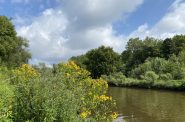 Aug 17th, 2024 by Cari Taylor-Carlson
Aug 17th, 2024 by Cari Taylor-Carlson
-
Kilbourntown Tour Offers Tons of History
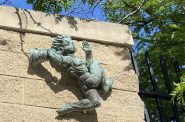 Oct 8th, 2023 by Cari Taylor-Carlson
Oct 8th, 2023 by Cari Taylor-Carlson
-
Riverwest Is a Melting Pot
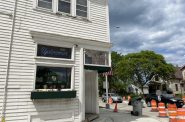 Aug 25th, 2023 by Cari Taylor-Carlson
Aug 25th, 2023 by Cari Taylor-Carlson


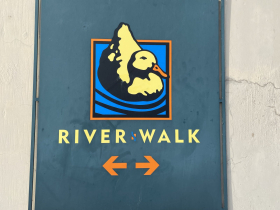
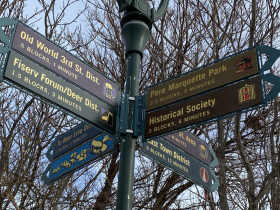
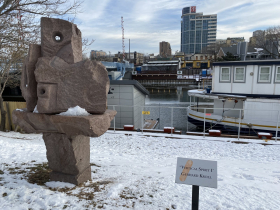
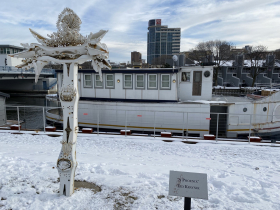
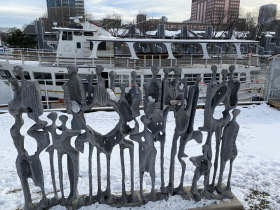
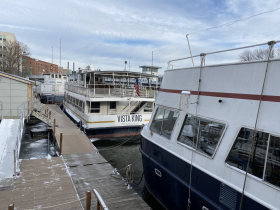




















Thank you for this interesting Riverwalk article and the pictures… My favorite Riverwalk restaurant was John Hawks Pub…I liked sitting on the patio or at an indoor window seat where I could watch the river and admire Gertie the Duck while feasting on a Reuben sandwich, pickles, chips, and an ice cold beer…
I wish I could travel back in time for just one more meal at John Hawks Pub…